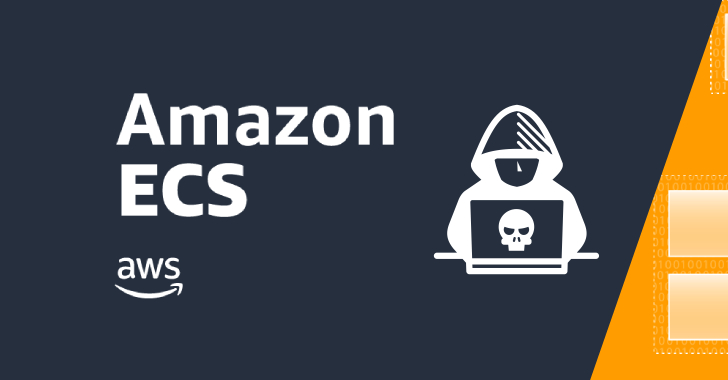
Avoiding Downtime: How Vendor Interoperability Testing Prevents Data Center Failures
Introduction
Data centers rely on multiple third-party vendors for networking, cloud services, cybersecurity, and hardware infrastructure. While vendors play a crucial role in optimizing performance, poor interoperability between their systems can lead to costly downtime, performance bottlenecks, and security vulnerabilities.
Vendor interoperability testing is a critical process that ensures seamless integration between new vendor solutions and existing data center infrastructure. Without it, organizations risk:
- Incompatibility issues leading to service outages
- Security vulnerabilities from misconfigured vendor systems
- Performance bottlenecks due to inefficient vendor integrations
- Extended downtime caused by untested software and hardware interactions
This article explores why vendor interoperability testing is essential, the risks of failing to test vendor solutions, and best practices for ensuring seamless vendor integration in data center environments.
The Risks of Poor Vendor Interoperability
Vendor-provided hardware, software, cloud services, and security tools must integrate flawlessly with a data center’s existing infrastructure. When interoperability testing is skipped or poorly executed, organizations face severe operational risks.
- Service Disruptions from Incompatible Vendor Systems
🔌 Problem: Vendors often use different protocols, APIs, and configurations, leading to software and hardware conflicts.
🔺 Common Issues:
- Cloud vendors using different API authentication protocols
- Networking vendors failing to comply with standardized routing protocols
- Hardware vendors supplying devices with conflicting firmware versions
🛠 Best Practices:
✅ Test vendor integrations in a controlled staging environment before deployment
✅ Standardize APIs and authentication protocols across vendors
✅ Ensure all vendor solutions follow industry interoperability standards (IEEE, ITU-T, IETF, etc.)
🔹 Example: A financial institution prevented a critical outage by detecting an API conflict between a new vendor’s firewall solution and its cloud security infrastructure during pre-deployment testing.
- Downtime from Vendor Software & Firmware Conflicts
⚠️ Problem: Vendors frequently release software updates, patches, and firmware upgrades that can cause system crashes or incompatibility issues if not tested beforehand.
🔺 Common Issues:
- Unpatched vendor software creating security vulnerabilities
- Firmware updates causing failures in networking or storage devices
- Conflicts between vendor software and existing data center configurations
🛠 Best Practices:
✅ Test all vendor software updates in a sandbox environment before deploying to production
✅ Require vendors to submit software change logs before implementing updates
✅ Conduct regression testing after vendor software upgrades to ensure system stability
🔹 Example: A data center suffered a major outage when a vendor’s firmware update unexpectedly disabled network switches. After this incident, the organization adopted a mandatory pre-testing policy for vendor updates.
- Security Breaches from Poor Vendor System Integrations
🔐 Problem: Vendors that fail to meet security standards can introduce vulnerabilities into a data center’s environment, leading to breaches.
🔺 Common Issues:
- Weak API authentication between vendors and internal systems
- Improper data encryption during vendor integrations
- Lack of vendor security patches leading to exploitable vulnerabilities
🛠 Best Practices:
✅ Ensure vendor security integrations comply with ISO 27001, SOC 2, NIST 800-53, and PCI DSS standards
✅ Use penetration testing to identify security flaws in vendor integrations
✅ Monitor vendor activity logs for suspicious access attempts
🔹 Example: A healthcare provider avoided a HIPAA compliance violation by identifying an unencrypted data transfer issue during vendor interoperability testing.
- Performance Bottlenecks Due to Poor Network & Cloud Vendor Integration
🚦 Problem: Data centers that rely on multiple cloud providers, networking solutions, and data storage vendors must ensure smooth communication between all components.
🔺 Common Issues:
- Slow data transfers between cloud vendors due to protocol mismatches
- High latency from inefficient API calls between vendor services
- Storage vendors using different data formats, causing processing delays
🛠 Best Practices:
✅ Optimize vendor network traffic routing to avoid congestion
✅ Test vendor APIs for efficiency before full-scale deployment
✅ Ensure cloud vendors support multi-cloud data synchronization
🔹 Example: A global e-commerce company eliminated transaction delays by testing vendor cloud API latency, ensuring faster data synchronization across regions.
How Vendor Interoperability Testing Prevents Downtime
Interoperability testing validates vendor integrations before production deployment, ensuring seamless connectivity and stability.
- Create a Dedicated Vendor Testing Environment
🛠 Simulate real-world data center conditions in a controlled lab environment.
✅ Test vendor software, APIs, and hardware configurations before live deployment
✅ Simulate high-traffic conditions to evaluate vendor system performance
✅ Run security penetration tests on vendor-integrated components
- Implement Automated Testing for Vendor Integrations
🤖 Use AI-driven testing tools to detect compatibility issues faster.
✅ Leverage automated API testing tools to verify vendor software integrations
✅ Use network simulation tools to test vendor connectivity under load
✅ Automate security scans on vendor solutions before production rollout
- Standardize Vendor Onboarding & Testing Requirements
📋 Create a structured vendor assessment framework before approving new vendors.
✅ Define interoperability testing as a mandatory vendor onboarding step
✅ Require vendors to provide detailed API and security documentation
✅ Ensure vendors adhere to standardized communication protocols
- Conduct Routine Vendor Performance & Security Audits
🔍 Continuously assess vendor compliance with security, uptime, and integration standards.
✅ Perform quarterly audits of vendor security patches and software updates
✅ Monitor vendor uptime metrics to ensure compliance with SLAs
✅ Review vendor access logs for unusual activity
- Establish Vendor Failover & Incident Response Strategies
🚨 Prepare for vendor failures with built-in redundancy and failover mechanisms.
✅ Ensure secondary vendors can take over in case of a failure
✅ Develop an incident response plan that includes vendor coordination
✅ Conduct disaster recovery drills with vendor participation
Conclusion
Vendor interoperability testing is a critical defense against downtime, security risks, and performance failures in data centers. Without structured testing, organizations face costly outages, compliance violations, and operational inefficiencies.
Key Takeaways:
✅ Test vendor integrations before full deployment to prevent incompatibility issues
✅ Regularly assess vendor software updates and firmware patches for stability
✅ Ensure vendors follow security best practices for data protection and API authentication
✅ Optimize vendor connectivity to prevent latency and performance bottlenecks
✅ Develop failover strategies to maintain uptime in case of vendor service failures
By standardizing vendor interoperability testing, organizations can eliminate integration risks, prevent downtime, and maintain seamless, high-performance data center operations.
Contact Cyber Defense Advisors to learn more about our Data Center Vendor & Partner Integration Standardization Services solutions.





